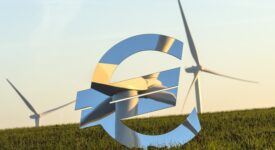Renewable energy is poised to generate up to 50% of the European Union’s energy by 2030 as more offshore capacity is being installed, especially in wind power. The whole sector has been growing in general and it was for the very first time that the EU generated more electricity from clean sources than coal. Europe’s wind power production got a boost last year after 3,148 MW had been installed at sea and connected to the grid, twice the total for 2016. WindEurope, a wind power advocacy, forecasts that the coming two years will also set records for connected capacity thanks to large-scale pending projects in Germany, Belgium and the United Kingdom.
In a long term, the future looks promising for the industry as member states are working to meet their 2020 deadline. Current laws and regulations will no longer apply and negotiations are pending for the 2020-2030 period. An independent analysis jointly published by think tanks Sandbag and Agora Energiewende shows that renewables outstripped coal power for the first time when it comes to electricity generation. Their report – ‘The European Power Sector in 2017’ – called that progress “incredible”, emphasizing that coal generation was more than twice that of wind, solar and biomass in 2010.
Last year, wind, solar and biomass generated almost 21% of Europe’s electricity, contributing to a third of the mix. The study based its findings on the fact that the renewables grew 1.7% since 2010, which could yield their contribution to Europe’s electricity to 50% by 2030. However, the analysis also pointed out that the growth was not universal across the bloc after it had been revealed that the UK and Germany had accounted for more than half of the growth in the past three years.







